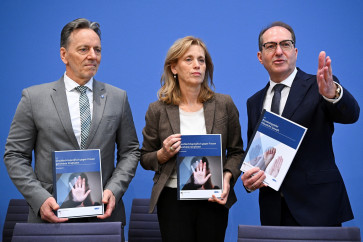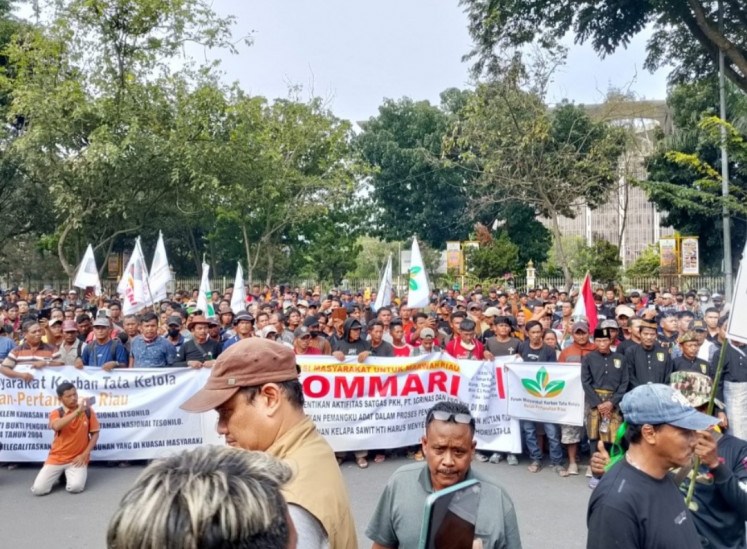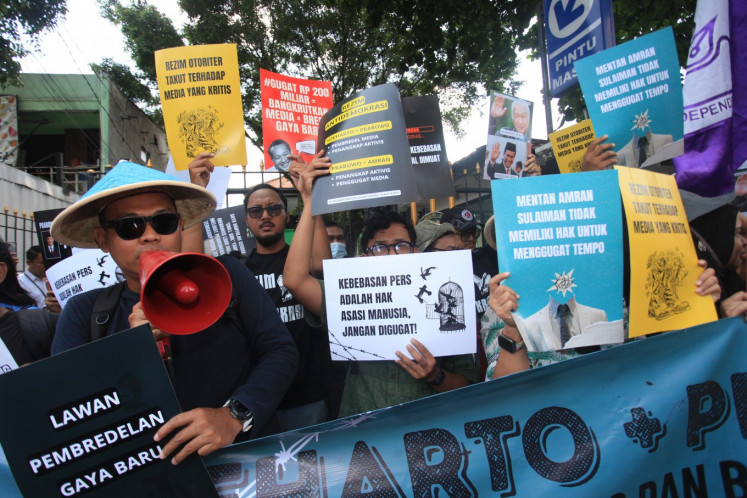Popular Reads
Top Results
Can't find what you're looking for?
View all search resultsPopular Reads
Top Results
Can't find what you're looking for?
View all search resultsBI governor tells small banks not to resist mergers
Bank Indonesia (BI) Governor Darmin Nasution has once again highlighted the importance of consolidation among small banks, asking banks with weak capital to open their doors to mergers and acquisitions
Change text size
Gift Premium Articles
to Anyone
B
ank Indonesia (BI) Governor Darmin Nasution has once again highlighted the importance of consolidation among small banks, asking banks with weak capital to open their doors to mergers and acquisitions.
“If small banks are facing difficulties with their capital, then they should merge with other banks,” Darmin told reporters after Friday prayers.
Many small banks are reluctant to take merger and acquisition measures on fears that such consolidation would affect the ownership of their founders.
“The small banks are often selfish. They are not willing to perform mergers,” Darmin said, adding that without being merged with other banks, it would be difficult for them to compete.
In 2004, BI issued a national banking plan designed to reduce the number of banks in the country in its mission to build a leaner banking landscape. At that time, the central bank planed to divide banks based on their capital standards: three to five banks of international class, five to seven national anchor banks, and 30 to 50 specialized banks, supported by thousands of rural or community banks.
There are currently 120 commercial banks operating in Indonesia, a figure that has been criticized by analysts as too high and which makes banking supervision in the country difficult. But the banking industry is still dominated by Indonesia’s four major state banks and several private banks.
“Truthfully speaking, our banking industry is too diversified, a problem that was solved by our neighboring countries in the 1998-1999 by building banking consolidation,” said Darmin, adding that too much diversification in the banking industry made some of BI’s regulations difficult to implement or ineffective.
A smaller number of banks would not only make banking supervision effective, but would also create more competition in Indonesia’s banking industry, which is frequently criticized for being dominated by several banks, analysts said.
At present, Indonesia’s 10 largest banks, including Bank Central Asia (BCA), Bank Mandiri, Bank Rakyat Indonesia (BRI), Bank Negara Indonesia (BNI), CIMB Niaga and Bank Danamon, control about 60 percent of the banking industry’s total assets, which reached Rp 3,652 trillion (US$380.7 billion) as of January, this year.
Consolidation among banks with limited capital will also improve Indonesian banks’ preparedness to absorb financial shocks as well as make BI’s monetary tools more effective, according to CIMB Niaga economist Wisnu Wardana.
“Having too many banks leads to a shortage of liquidity in small banks. These small banks have difficulties competing with big banks to absorb liquidity in the Indonesian market,” said Wisnu.
“BI’s monetary policies are ineffective if there are still many banks with weak liquidity; if BI lowers its benchmark rate, these banks cannot suddenly lower their interest rates due to limitations in their liquidity,” he added.
BI’s Darmin also said that in November, the central bank would issue multiple license regulations that would divide banks by their capital strength. BI hoped that the regulation would provide incentives for banks to consolidate through mergers and acquisitions.
The country currently has only a single license that allows banks to offer a full range of services and open as many branches as possible, whereas in other countries in the region like Singapore and Malaysia, multiple licenses are required.
Under the new multiple license rule, a bank must raise its capital if it wants to expand its business, therefore offering incentives for banking consolidation among banks with limited capital. (sat)










